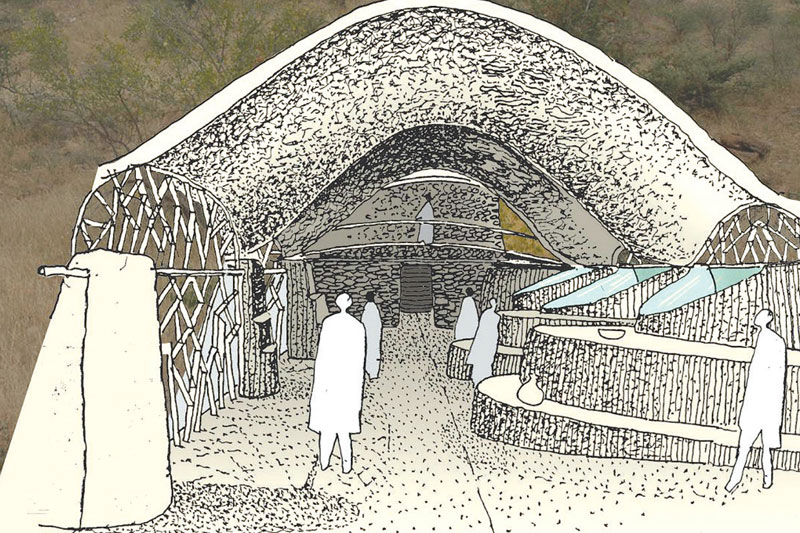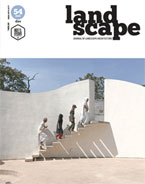Art & Culture
Free - Hand Drawing as a Thinking and Analytical Tool | Manalee Nanavati
LA 54 |
|
| Every architect's approach to design is a factor of the project, the context and one's own psyche. Thus, there arise two tasks imperative to the translation of an architect's primary intuition into his design- Seeing and Drawing what is seen. To facilitate this communication, hand sketching often presents itself as a useful tool as opposed to computer aided design technologies that handicap one by limiting the creative expression of collected experiences.
|
|
 |
|
The approach of engaging with built and unbuilt landscapes varies from architect to architect. It, of course, varies from project to project and context to context; nonetheless, even while working in the same contextual settings two architects generally carve out different spatial expressions moulding the landscape in different ways. In ways that often(not necessarily always) reflect their individuality or style of design.
JuhaniPallasmaa in his book 'The Architecture of Neuroscience' notes that 90 to 95 percent of what architects do is intuitive. These intuitions are triggered by our personal experiences, 90 percent of which are stored in our brain. Our brain, thus, serves as a repository of our experience of various spaces. However, translation of these intuitions into design is the real key task. It is observed that often it is this particular stage that differentiates the masters from the rest of the designer community. The skills of sharply observing, analyzing, comprehending and abstracting spatial and contextual settings are therefore given great emphasis in academia as well as in practice.
'SEEING', in essence, becomes the first important phenomenon in this process of translation, while the second becomes 'DRAWING' what is seen. This phenomenon of seeing is linked to human experience by John Ruskin, who says that the 'greatest thing a human soul ever does is to see something, and tell what it saw in a plain way.' Thus, an essential part of this seeing is the way our senses respond to lateral vision. In other words, just as smell often adds to taste, our experience of a particular space or its elements reflects on the way we see it. Hence, sketching or hand-drawing those spaces offer an opportunity to inhabit them.
|
|


|
|

|
|
|
|

|
| ISSUE NO: 54 |
|
 |
|
Report
ICOMOS: Heritage & Democracy
Nupur Prothi Khanna, Antara Sharma and Ritika Khanna
Spotlight
CEPT Landscape Celebrates 25 Years
Geeta Wahi Dua
Landscape Program:
Centre for Environmental Planning and Technology, CEPT
Dr Deepa Maheshwari, Sandip Patil,
Bobby Sujan & Divya Priyesh Shah
Celebrating 50 Years of Landscape Architecture Education:
The University of Sheffield, UK
Jan Woudstra
About Design
Whither Design?
Iftikhar-mulk Chishti
Conversing with Nature
Sarthak Sinha
A Place for Expression and Togetherness
Anand Sonecha, SEA-Lab
Drawing
Free-hand Drawing as a Thinking and Analytical Tool
Manalee Nanavati
Tributes
Remembering KurulaVarkey
Neelkanth H. Chhaya
'My Tryst with Hasmukhbhai'
Sanjay Sridhar
Urbanism
Between itself and the World: Ahmedabad
Riyaz Tayyibji
Here Comes the Heart Attack:
Encroaching on the Public Realm
Sameer Chadha
From Practice of Indulgence to Practice of Service
In conversation with Rahul Mehrotra
Ecology and Environment
Understanding the Blue Systems: Bengaluru
Maithily Velangi
Landscape Design
Hidden Experiences: Bungalow, Ahmedabad
Beyond Green
Rejuvenating & Restoring Nature:
Capgemini Technology Services India, Pune
SAMA Landscape Architects
Redefining the Order of Green:
Farm House, Nashik
Ritu Sharma
Abode-e-Burhanpur: Residential Landscape
Nachiket Gujar
Seeing the Unseen
Between Notion and Reality
B. V. Doshi
Book Reviews
Meticulous Process, Meticulously Documented
Book: Rethinking Conservation Series:
Humayun's Tomb Conservation
Review by Urmila Rajadhyaksha
A Wanderer's Companion
Book: A Walking Tour: Ahmedabad
Review by Nisar Khan
The Abode: When Fading Memories Enliven the Present
Book: Krishna Lodge
Review by Snehanshu Mukherjee
Garden Calendar
Spring
Grotech Landscape Developers
|
|